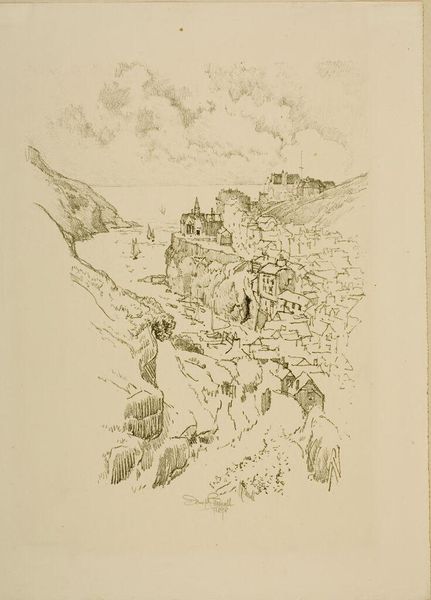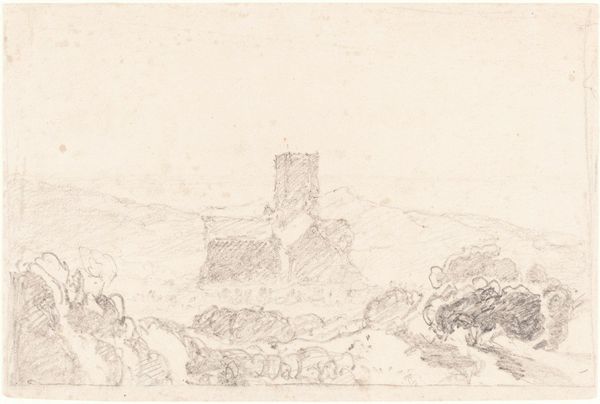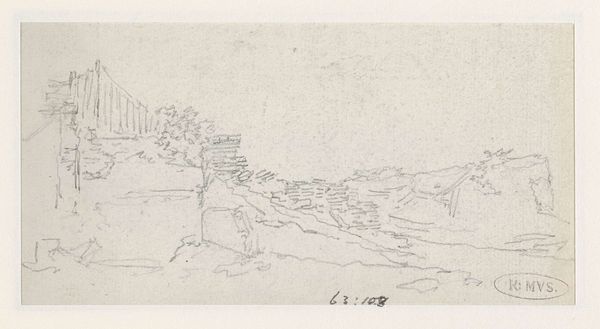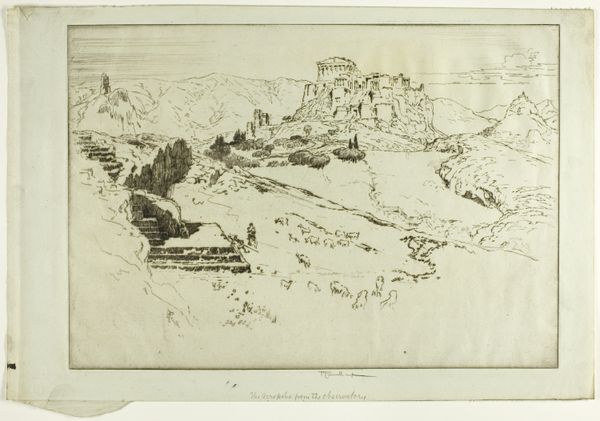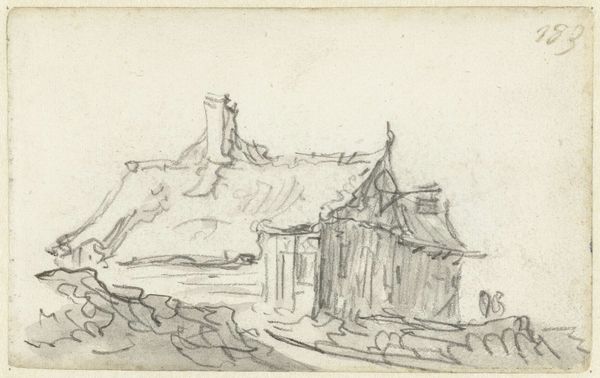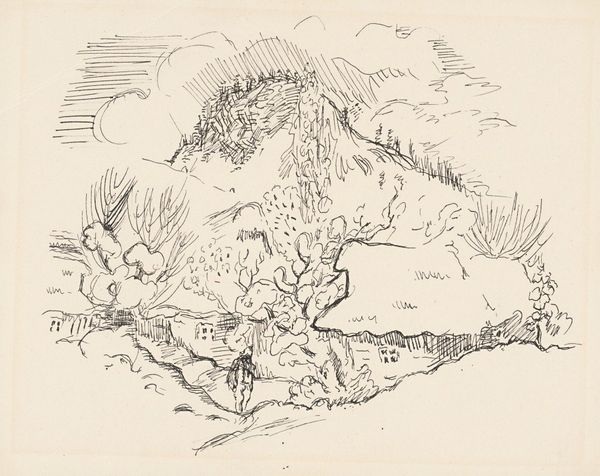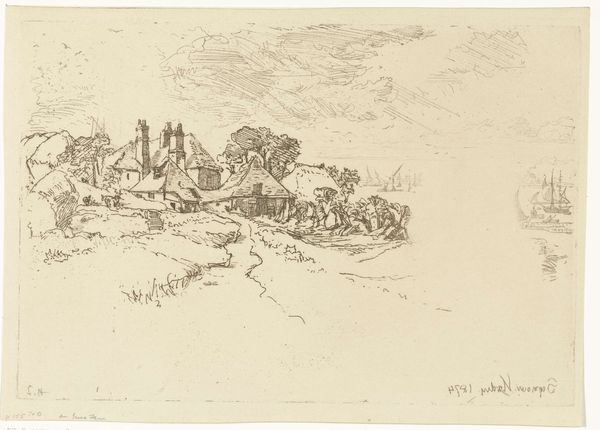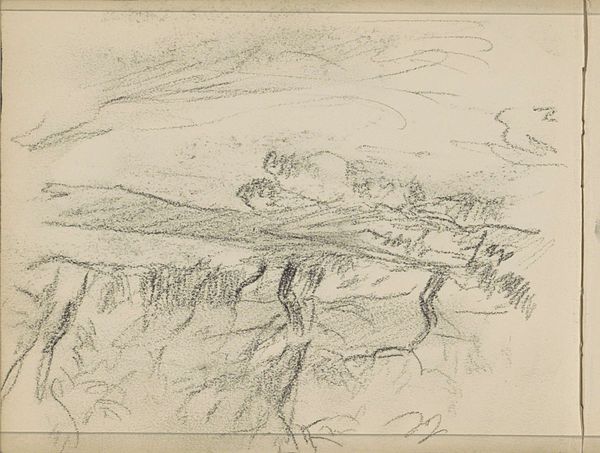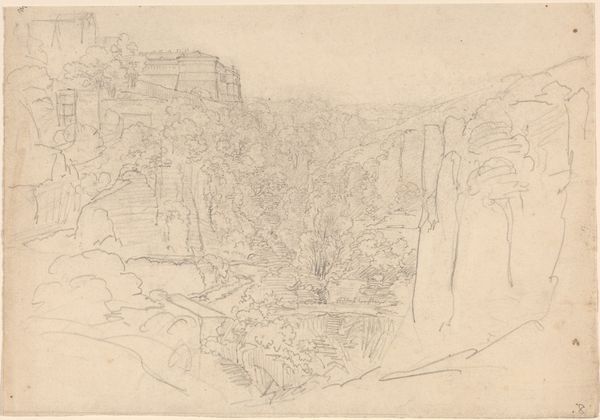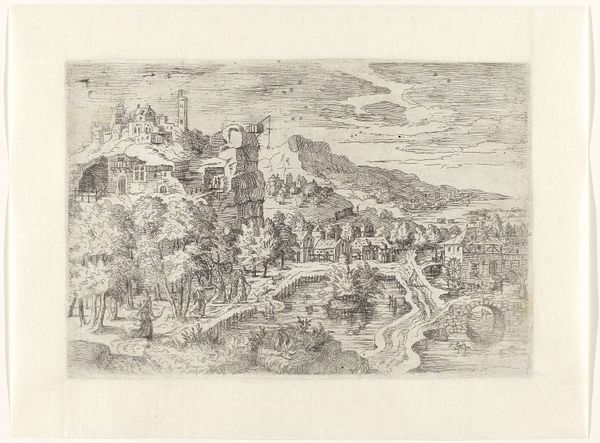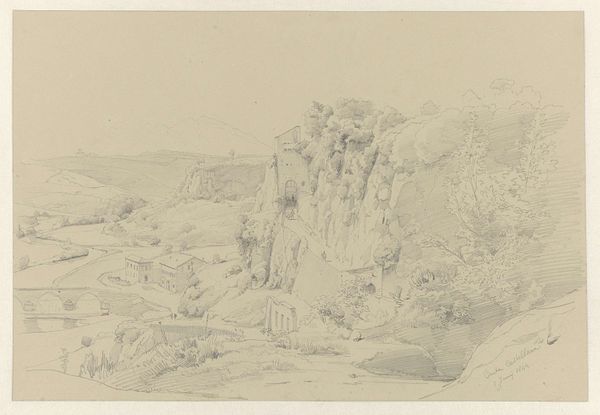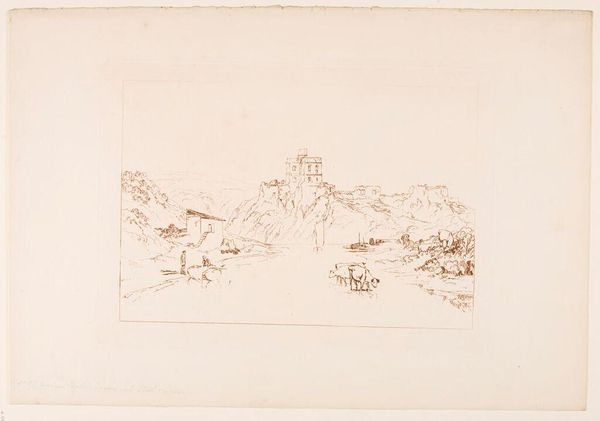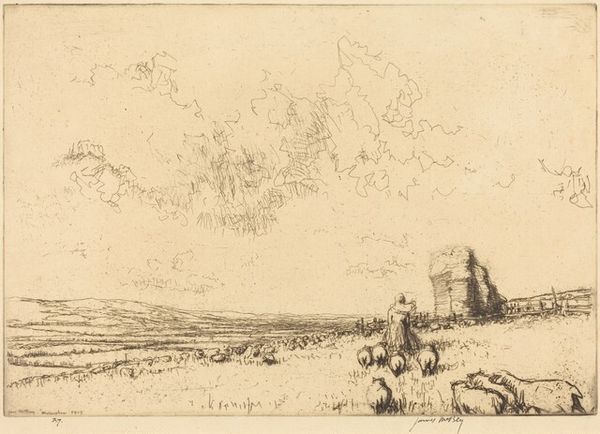
print, etching
#
ink drawing
#
pen drawing
# print
#
etching
#
landscape
#
history-painting
#
realism
Dimensions: plate: 19.84 × 24.77 cm (7 13/16 × 9 3/4 in.) sheet: 24.61 × 30.64 cm (9 11/16 × 12 1/16 in.)
Copyright: National Gallery of Art: CC0 1.0
Curator: Let's consider Lester George Hornby’s 1918 print, "A Dog Fight in the Air, at Cunel". It's an etching, using thin, deliberate lines to capture a war scene. Editor: It’s chaotic, isn’t it? Visually disorienting, almost like a sketch pulled directly from the trenches. There’s a sense of urgency. Curator: Absolutely. Look at the ruined church on the left, a broken tower reaching towards the sky. Churches have been central meeting points and gathering spots since ancient times; does it give any pause for thought? Editor: Definitely. The ruined structure represents more than physical destruction; it symbolises a broken societal framework, right? Faith, community – all undermined by the conflict. Also, the troops marching into that obliterated space: the hope for resolution is diminishing. Curator: Precisely. And, observe the planes barely perceptible in the sky, engaged in their "dog fight." While death occurs in a flurry above the scene, life continues here. The skies become a theater of destruction, detached yet integral to what transpires below, wouldn’t you say? Editor: You know, it raises uncomfortable questions about war reporting and nationalism at the time. Were images like this one desensitizing people? Sanitizing warfare by distancing it from the gruesome realities? What would those soldiers marching below feel? Curator: It is something to wonder about, I'm sure. But I find the use of linear perspective incredibly telling in this work. It conveys the sheer volume of troops moving toward the front and reinforces the idea of them as a collective rather than individuals. Editor: Which highlights the propaganda value even further! And what of the composition overall? The balance between devastation and march forward to oblivion—it all underscores the crushing futility. I am moved, and shaken! Curator: As you should be. Hornby really compels us to think deeply about the effects of war, how violence affects culture, spirit, and physical infrastructure simultaneously. Editor: Exactly, and not only what was happening then but what might still resonate from this. A sobering picture.
Comments
No comments
Be the first to comment and join the conversation on the ultimate creative platform.
